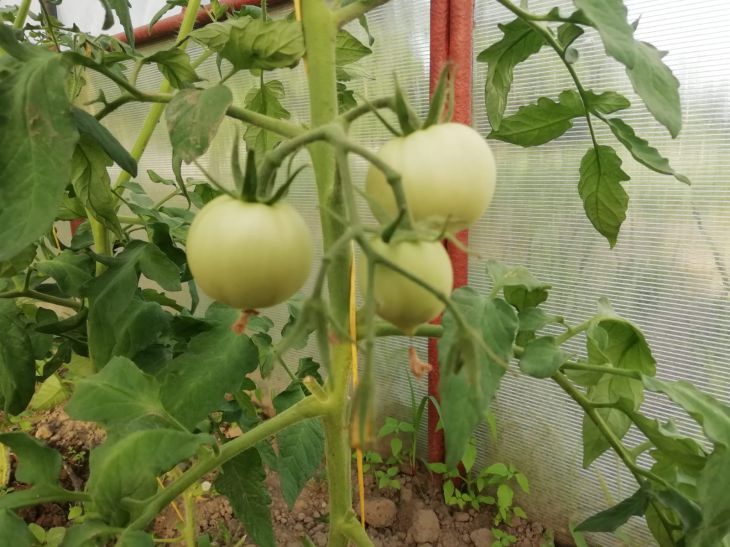An easy way to improve your soil is to add a few handfuls of compost or manure under each plant, or a bucket of compost per square meter.
Compost and composted manure are excellent amendments for tomatoes and many other plants. They provide the bed with essential nutrients and improve the soil structure.
These natural fertilizers provide a slow release of nutrients throughout the growing season.
But fertilizers do not help if tomatoes are planted in the same place every year or even every other year, as pathogens and toxins released by the root system accumulate in the soil. Despite good nutrition, plants slow down in growth, get sick, and their productivity decreases. That is why crop rotation is so important. And the more diverse it is, the higher the tomato harvest. But what can be planted after tomatoes in a greenhouse, except cucumbers?
Plants for greenhouse
Greens are a great way to create crop rotation in a greenhouse. Cold-resistant crops can be sown in the fall and early spring.

Some of them can be sown as compacting crops even in summer, when the tomatoes grow so much that low-growing crops do not interfere with them.
In autumn and spring, radishes, arugula, and lettuce are sown in the tomato bed. They will not only allow the soil to rest, but will also yield a wonderful harvest. And if winter is late, you can delight your family with fresh greens even in December, since these crops grow well in the cold.
In early spring, you can plant Chinese cabbage in the garden bed. As a rule, by mid-May, Chinese cabbage is already used for food. And if it has not formed heads, the leaves will be a great substitute for salad. Chinese cabbage can also be sown for seedlings in mid-July, and in August, planted in a greenhouse between tomatoes. By this time, their lower leaves have been removed and continue to be removed, so the Chinese cabbage will have enough space.
Also in the second half of July and even in early August, you can sow turnips, radishes, and rutabagas between tomatoes. These root crops from the cruciferous family grow well in the fall and improve the soil. By the way, at the same time, you can sow cruciferous green manure (oil radish and mustard). They will gain strength by the time it is time to remove the tomato tops. Cruciferous plants have one irreplaceable property - they suppress the development of late blight and other pathogenic microorganisms, which are frequent guests in potato and tomato beds.
It is also worth mentioning the crops that cannot be planted after tomatoes. These are plants from the same family. These include potatoes, eggplants, peppers, and physalis. They themselves will not yield a good harvest and will worsen the condition of the soil.








